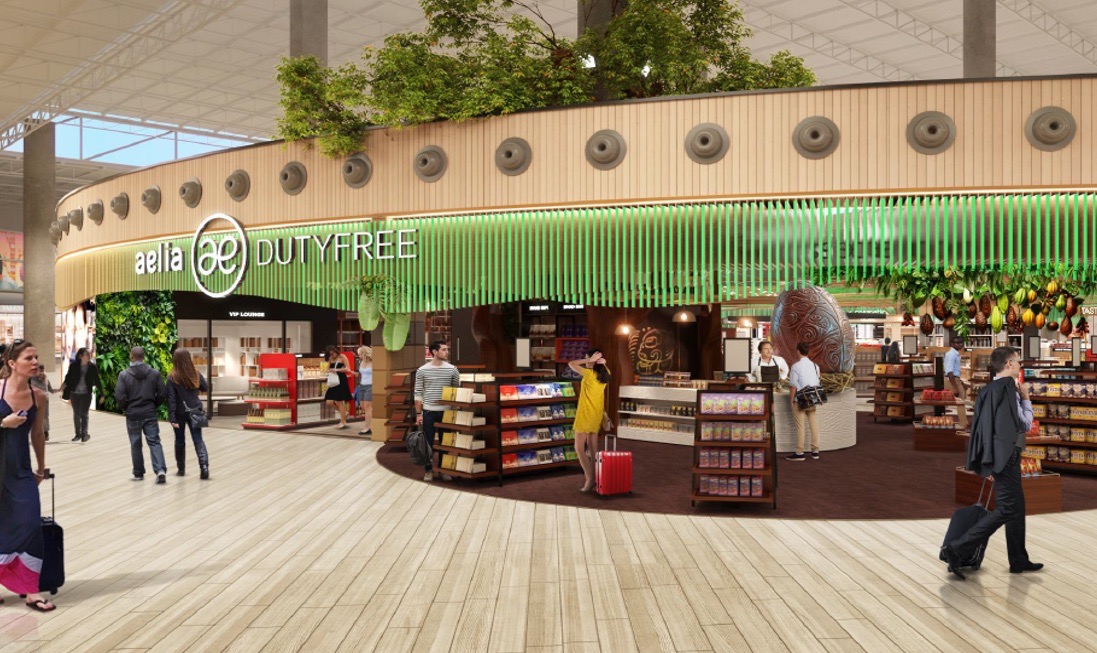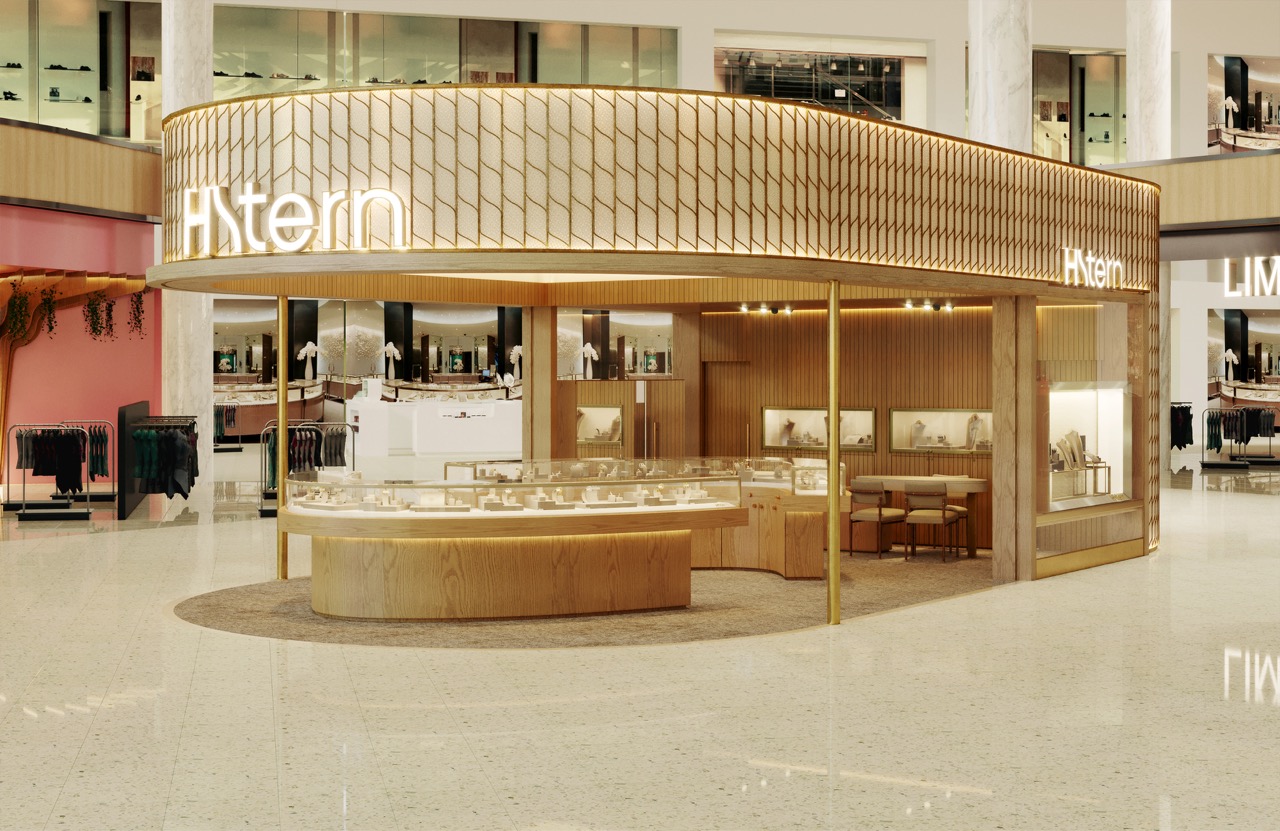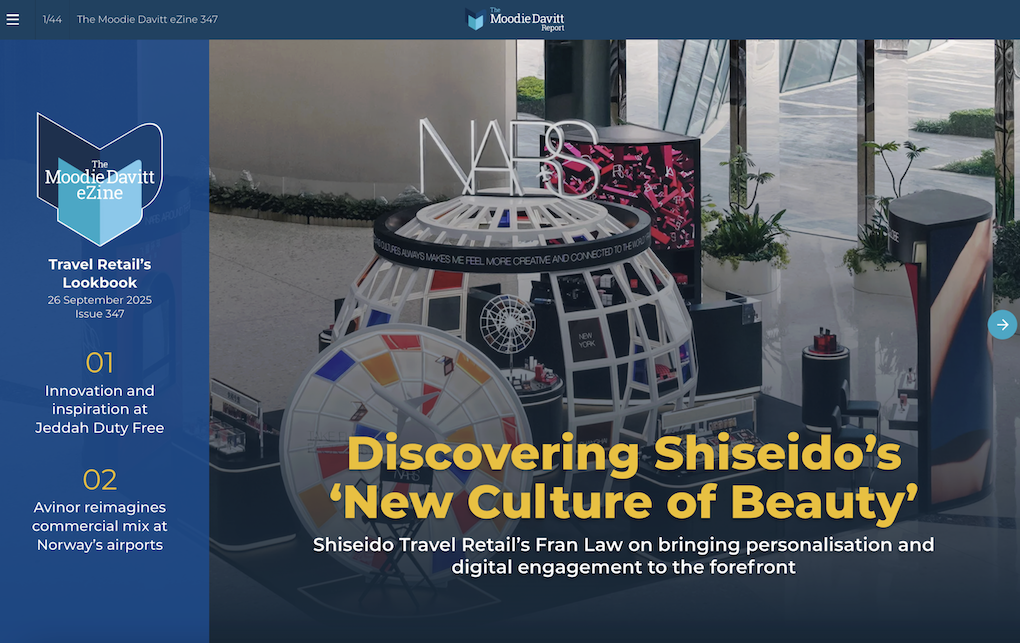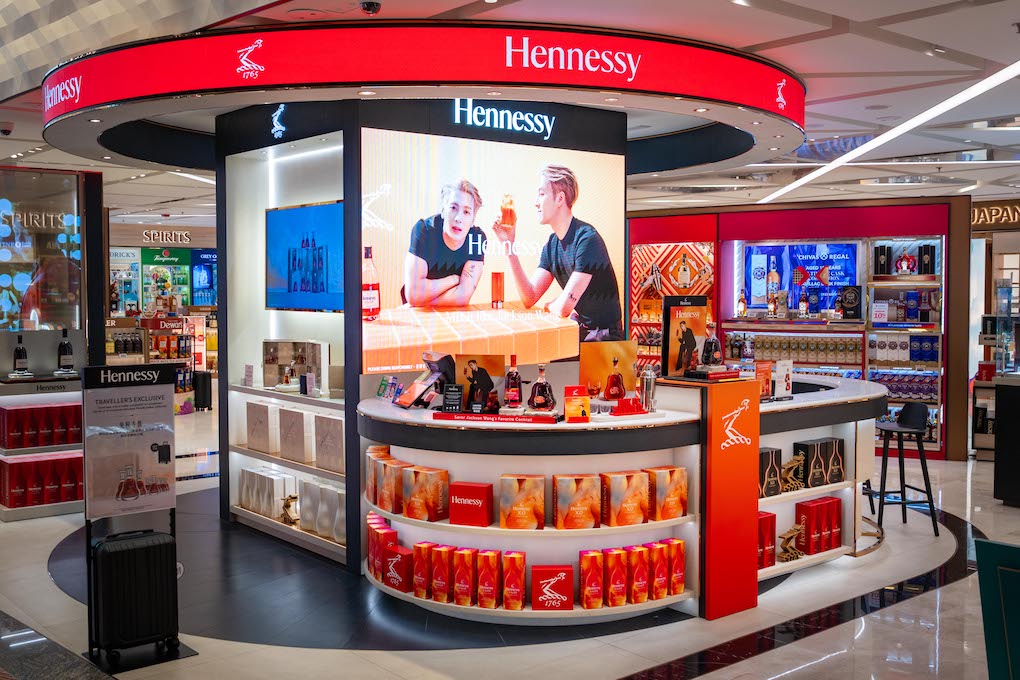PERU. A milestone moment in the progress of Latin American aviation will take place on 18 December, when Lima Jorge Chávez International Airport opens a new future-focused terminal, with commercial services at its heart.
With capacity for 40 million passengers a year from 2026, once construction is fully completed, the terminal will serve domestic and international travellers under one roof.
Localisation in design and offer is a key thread running through the retail development, with a much-enhanced experience for travellers pledged by Lima Airport Partners (LAP), which is majority owned by Fraport.

LAP Chief Commercial Officer Norbert Onkelbach tells The Moodie Davitt Report: “Customer-centrism is the basis of our vision. Our commercial marketplaces have been carefully and thoughtfully designed to maximise the experience of our visitors with solutions to engage, entertain and connect with the passengers travelling to and from Lima. We expect to be a gamechanger for the Latin American region and a reference in attending our passenger needs.
“Our retail strategy [with commercial design by Vancouver-based SmartDesign Group -Ed] is based on key principles: a strong sense of place and a permanent improved customer experience. That includes a client-focused brand and retail mix. By applying these principles, we aim to meet our commitment for a memorable customer experience and increased passenger satisfaction. This is quite a challenge for us.”

LAP has recruited around 30 commercial partners for the new terminal, many of which are already well established at Lima Airport. These include Lagardère Travel Retail for duty free and food & beverage; Costa-Rica-based Morpho Travel Experience for speciality retail as well as Peruvian companies such as Acurio Restaurants, Retail Services, Incalpaca, Grupo Michell among others for both F&B and speciality retail.
Active commercial space in the terminal spans around 27,000sq m, with 19,000 for retail, dining and other services, plus 8,000sq m for lounges. The latter includes 2,500sq m for prime airline user LATAM Airlines (which accounts for around 55% of traffic), with the balance managed by global specialist Collinson under a ten-year agreement, covering spaces in domestic and international departures, plus arrivals.

Onkelbach highlights commercial flexibility and innovation in the mix of commercial operating models and retail portfolio management. On the one hand, this includes a ground-breaking profit-sharing contract for duty free (since January 2022) with Lagardère Travel Retail; other agreements covering the new terminal are based more on the classic concession model, but all involve strong collaboration and partnership, says LAP.
“During our commercial process strategy, we identified three different models to be implemented for the go-to-market process,” says Onkelbach. “The first two models, with collaborative and cooperative relationships, create a platform to jointly review the business strategy over a long concession period with the focus on enhancing the passenger experience. The third model is related to the traditional contract agreement well known in the travel retail industry.
“When we carried out our commercial tenders, for the main business opportunities we increased and improved the selection features over time. Depending on the sub-category strategies for retail, F&B and lounges and services we had workshops with bidders to discuss their strategy and action plan at the airport supporting our vision to elevate the passenger experience.
“For these contracts, we have introduced a governance model, a platform where we discuss key business decisions to manage the business and overcome potential challenges that may occur in the future. We have incorporated learning from the global pandemic as well. Overall the commercial goals are to grow passenger satisfaction and maximise the non-aeronautical retail result.”

Onkelbach adds: “Commercial planning for a new terminal requires strong cooperation between partners. With the goal of being more customer-centric we believe in a fair and transparent relationship with our commercial partners.”
How LAP is celebrating Peruvian heritage through new concepts, designs and product ranges with its partners is a recurring theme in our conversation.
A commercial central plaza where passengers will dwell before departure delivers the opportunity to create a uniquely Peruvian environment in look and feel.
A food hall in each of the International and Domestic marketplaces will present a “dynamic environment” that celebrates Peruvian gastronomy.
“We are in particular proud of the F&B category which serves to position Peru for the domestic and international traveller. Peru is one of top destinations in the world with several restaurants among the top 50 worldwide,” says Onkelbach.

Highlights of the F&B offer will include casual dining concepts from garlanded, globally recognised Peruvian chefs like Mitsuharu ‘Micha’ Tsumura and Jaime Pesaque, as well as Gaston Acurio, a pioneering ambassador for Peruvian cuisine.
In addition, LAP’s commercial partners will introduce new flagship stores for luxury Peruvian concepts such as alpaca, vicuña apparel and jewellery. Speciality retail will be prominent, with several flagship stores introduced by leading brands.
Highlighting the importance of sense of place, Onkelbach says: “Lima Airport is the main gateway and a first entry point for visitors to Peru. The airport is the perfect platform to position the Peruvian gastronomy as well as the vast number of products that Peru has to offer.
“In the new marketplaces our visitors will be surrounded in a unique environment through a curated mix of international and local brands. With a share of 55% domestic traffic and 45% international traffic we designed two different marketplaces for the Peruvian and international clientele: the Peruvian marketplace gives a strong local mix with international QSR brands while the international marketplace represents Peruvian casual dining and a food hall. Starbucks, as a recognised global brand, appears in all terminal areas.”

Sense of place is just not about food or retail. To establish a point of difference for Lima Airport, and to create “emblematic and instagrammable moments”, LAP has integrated artistic elements in the marketplaces to celebrate Peruvian culture.
Through a partnership with Museo de Arte de Lima, one of the leading museum houses in the country, a curated offer from multiple artists will showcase the local essence and create both physical and social connections with Peru, notably through a series of sculptures. More will be revealed soon but Onkelbach says that LAP is very proud of this collaboration.
Through its profit-sharing model for duty free, Lima Airport has already established itself as a pioneer for progressive commercial management in Latin America.
What other lessons might the industry take from the planning for the new terminal, we ask?
Onkelbach says: “One key lesson is the early engagement in the design of the terminal. Very early on we contracted SmartDesign to assist us in designing the marketplaces. Overall, the design of the terminal is an interactive process involving diverse departments.
“What helped us in the planning process was a back to back process with the terminal designers and retail designer since 2018. The experience shows that there are iterations to the plan and the retail strategy served as a guiding document which includes continuous learnings and market representation.
“Under that approach, we engaged very early on with potential bidders in the sounding process to formulate the market-based retail strategy. I can only recommend [others] to start early with the formulation of the technical employer requirements for the retail master plan. Do not be afraid of the learning curve, it is a rewarding experience which grows the confidence of our operators and ourselves as airport managers.”
Expanding Lima’s reachWith its big terminal opening hoving into view, Lima Airport Partners (LAP) says that its vision is for Jorge Chávez International Airport to become a firmly established connection point between North and South America, and to connect many more secondary regional cities as it expands. A glance at its key airline partners offers an insight into its current connectivity: LATAM accounts for around 55% of passenger traffic, followed by Chile-based Sky Airlines and JetSmart, each at over 10%. Passenger traffic, which was 23.5 million before COVID, should reach 23.9 million or even 24 million this year, although the recovery picture is more nuanced. In Q1, traffic recovery reached +4% above 2019 with retail income at 92% of comparable levels. In the international departure segment, traffic hit 97% of pre-COVID volumes with retail at 94%. In domestic, traffic growth of +13% was outstripped by +20% retail growth. The slower recovery in retail among international travellers is partially attributed to the sluggish performance in key markets Brazil, Chile and Argentina, though recovery is evident. Finally, LAP has lofty ambitions to drive not only sales but also spends once the new terminal opens. “We are short on space currently so expect a big uplift in 27,000sq m compared to 11,500sq m today,” says LAP Chief Commercial Officer Norbert Onkelbach. “We know space is not the only driver but we believe we can lift penetration in the various sub-categories, and of course we would like to see Brazilians in particular return at scale among the passenger profiles that spend well. Overall, we can hope to deliver +10% higher spend per head once we are fully open by late 2025.” |
*This article first appeared in The Moodie Davitt eZine. Click here to access that version. ✈












